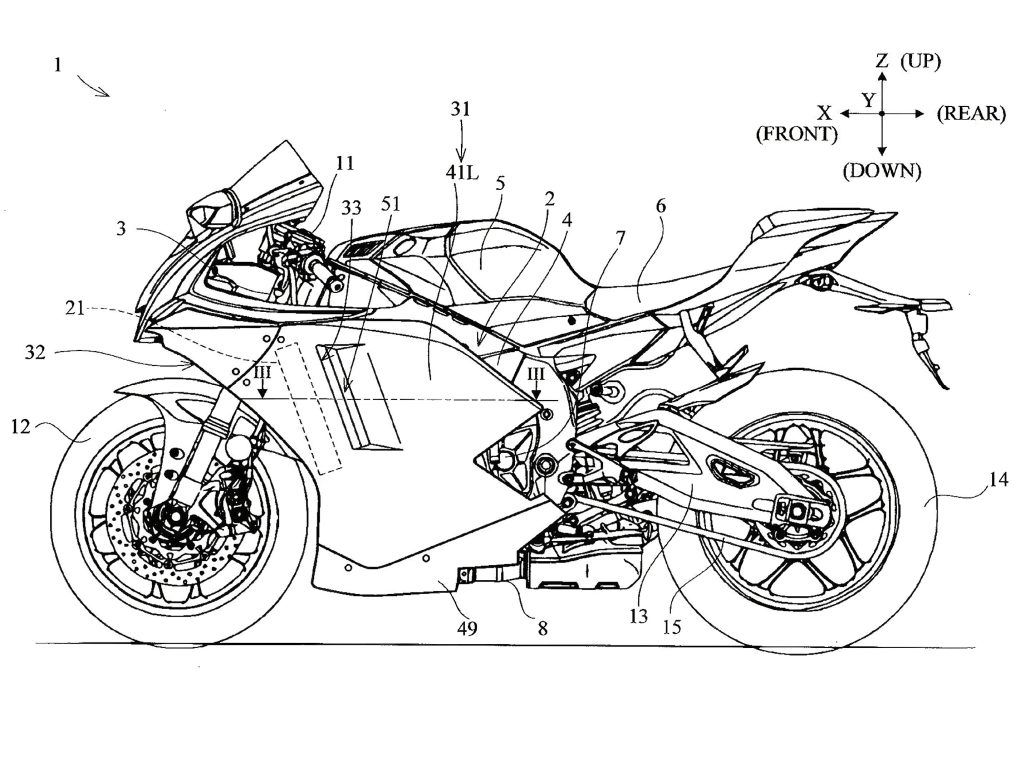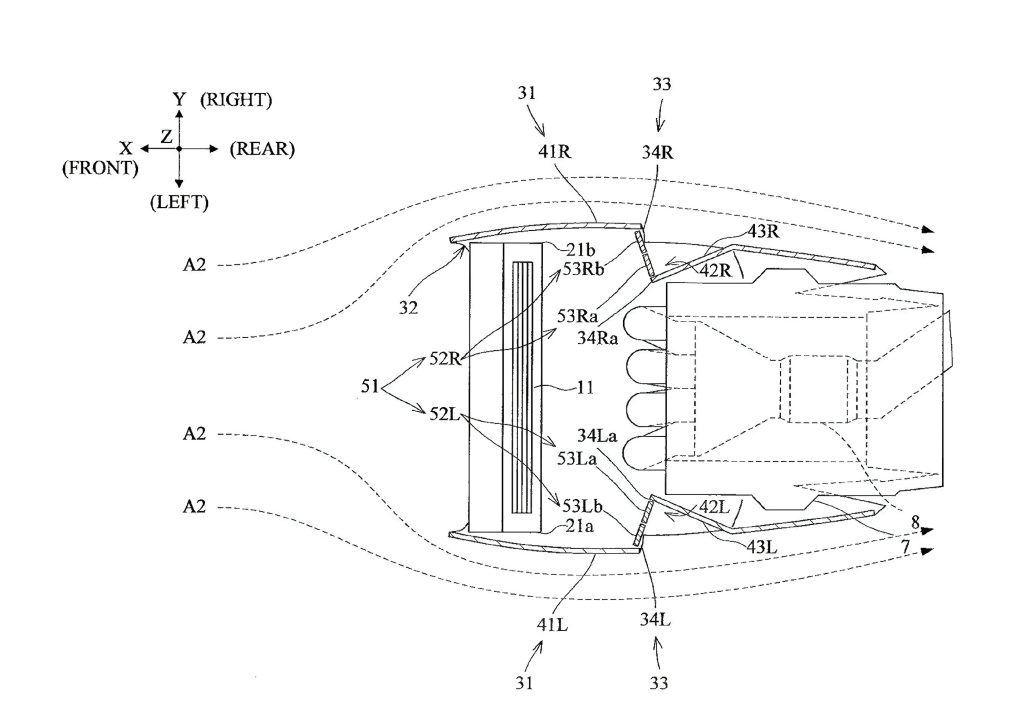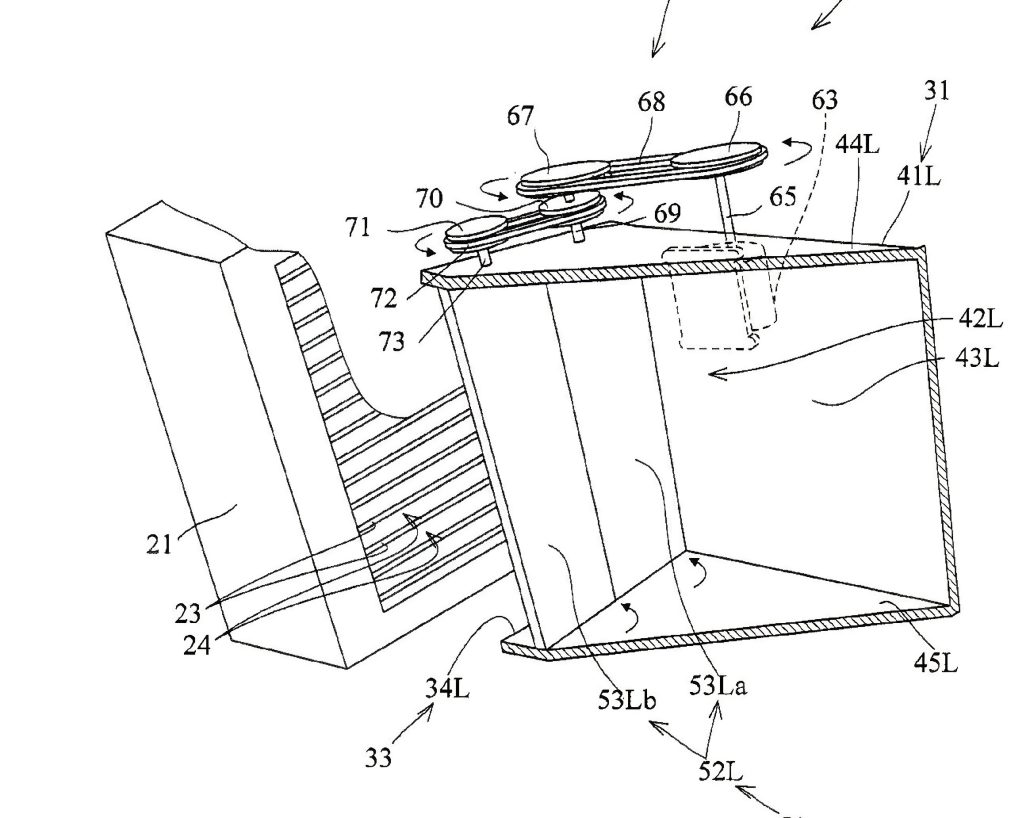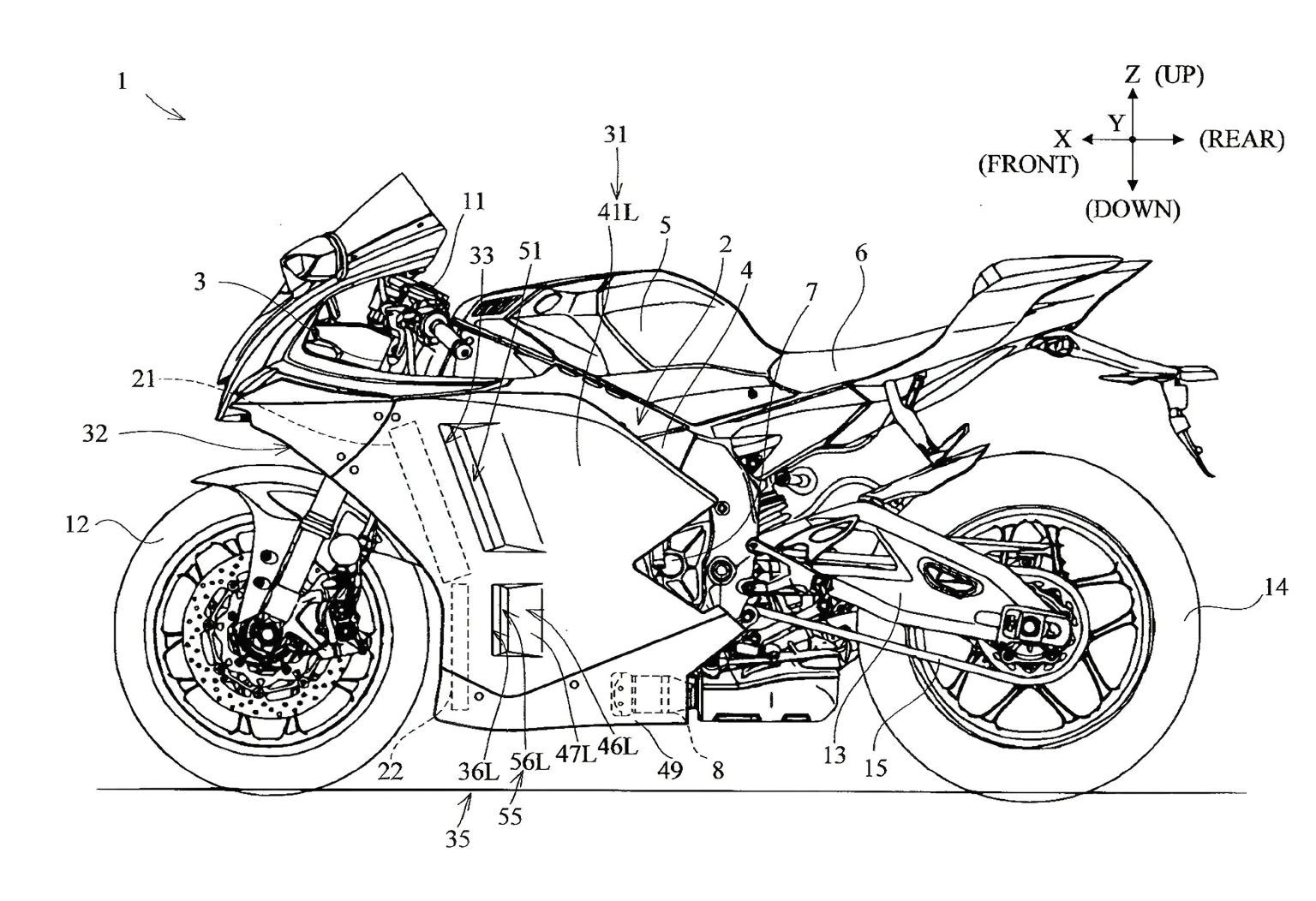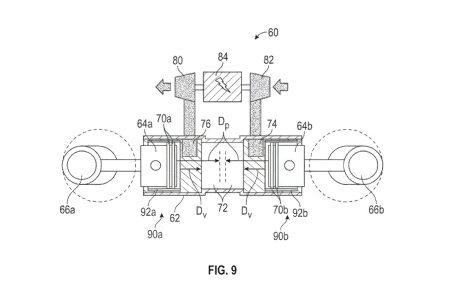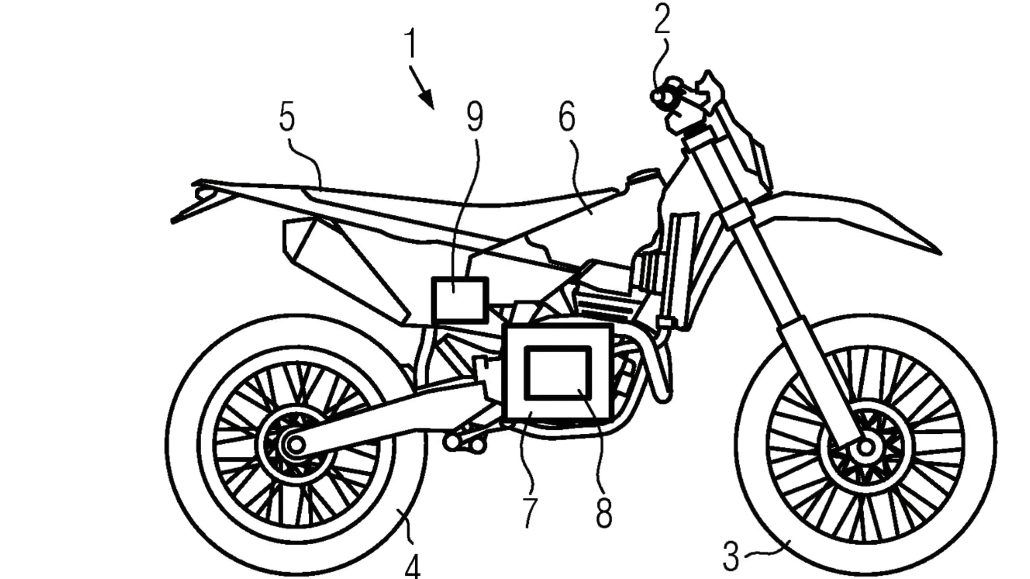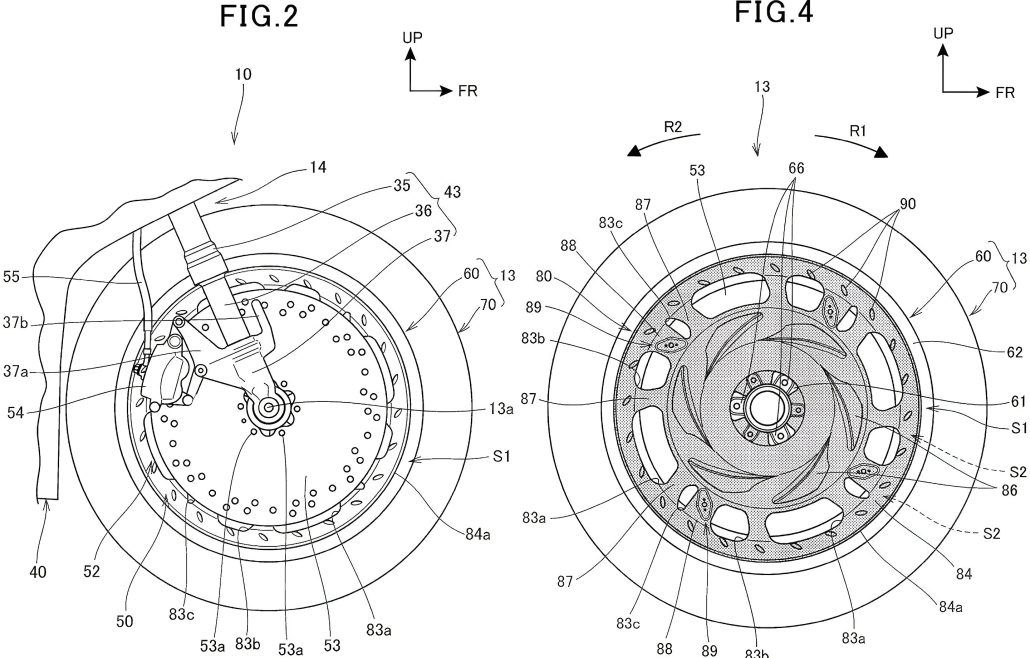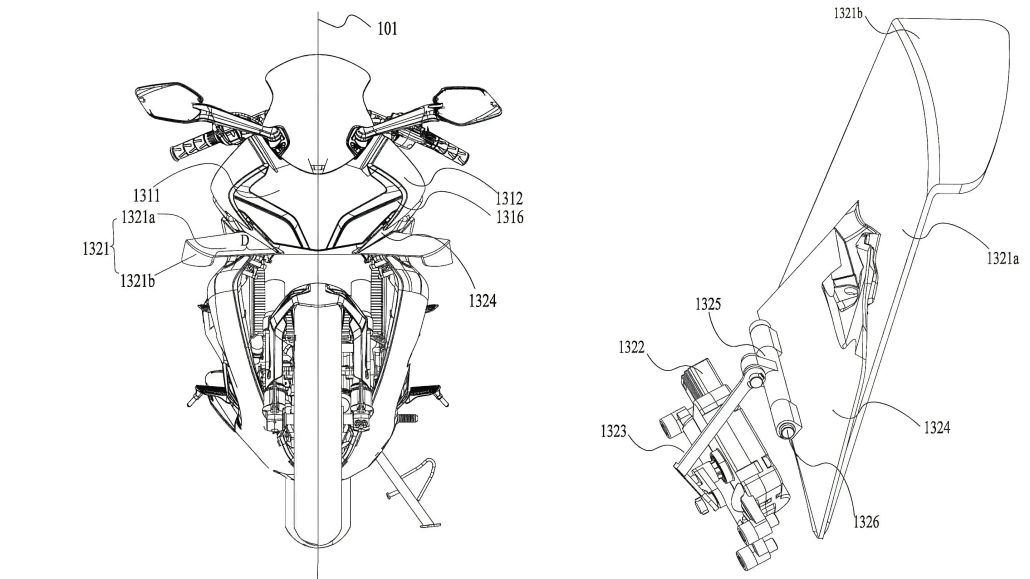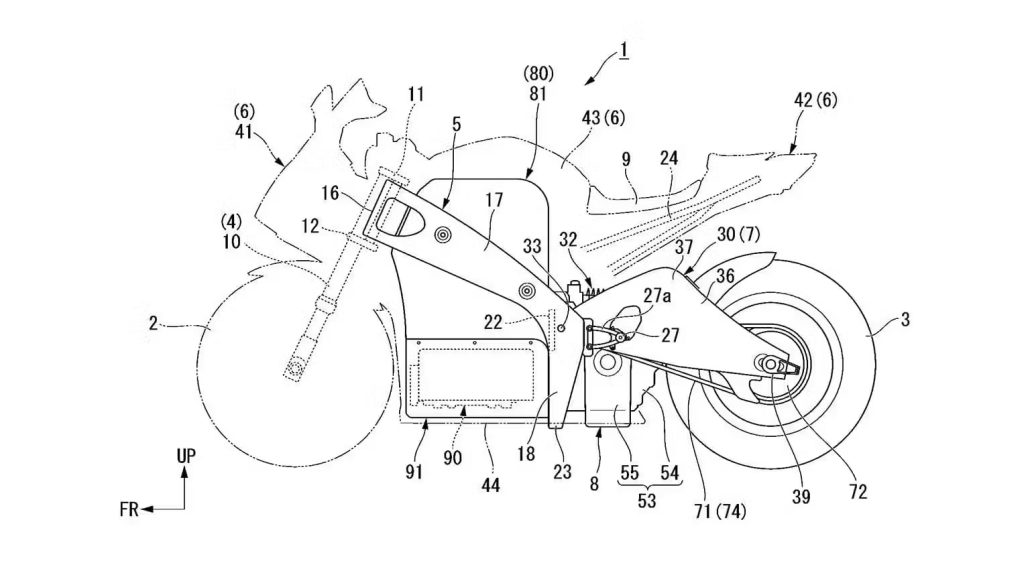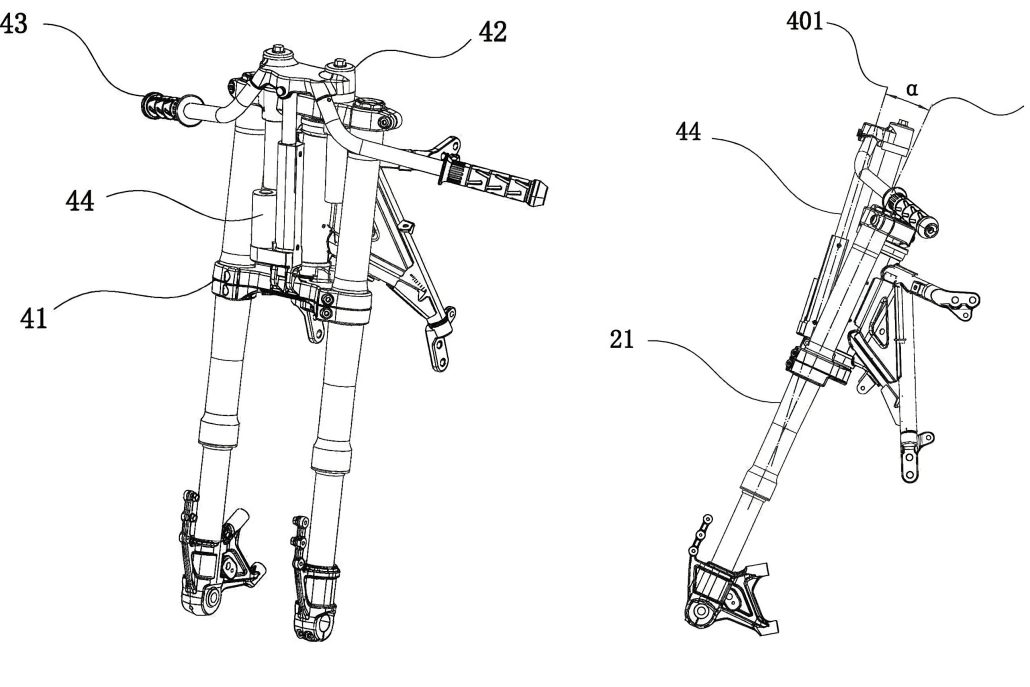Variable airflow: an old approach reimagined
The idea of using movable slats to control the airflow at the radiator is by no means new in vehicle construction. Even before World War II, many cars had manually or automatically operated radiator louvers. At that time, however, the focus was primarily on regulating the engine temperature. Adjustable cooling ducts also became popular in aviation to achieve aerodynamic advantages – the best-known example is the P-51 Mustang with its so-called Meredith effect. Here, the air passing through the radiator is used to reduce air resistance and even to generate a slight thrust.
In modern cars, active radiator shutters are now standard, especially to optimize aerodynamics and reduce fuel consumption. For motorcycles, this technology has not been an issue in series production to date, even though BMW, for example, filed its first patents for comparable solutions in 2023. Yamaha is now taking up the idea, but is pursuing a different approach.
How Yamaha’s new aero concept works
The current patent for the Yamaha R1 describes a fully faired side section with special air outlets that open or close automatically as needed. Unlike in cars, it is not the air intake in front of the radiator that is regulated, but the outlet of the warm cooling air behind the radiator. If the outlets remain closed, the air accumulates inside the fairing and the airflow that would normally pass through the radiator is directed around the side fairing.
According to the patent, this solution has two key advantages: firstly, air resistance is reduced because less air flows through the radiator. Secondly, it prevents the slower, turbulent exhaust air from the radiator from entering the faster airflow on the side of the fairing directly, thereby creating additional drag. If the outlets are closed when cooling requirements are lower, the airflow is significantly cleaner – which is particularly advantageous at higher speeds.
Yamaha shows two variants in the patent: one version with one large, variable air outlet on each side and another version with two smaller, individually controllable outlets on each side. The air outlets are opened by means of movable slats, which are adjusted by a small stepper motor via a belt drive. The control is handled by the on-board control unit, which takes into account numerous sensor data such as engine temperature, outside temperature, throttle position, speed, and the temperature of the catalytic converter.
Intelligent thermal management for engine and catalytic converter
According to the patent, the system offers a wide range of options for actively influencing the thermal management of the motorcycle. For example, the operating temperature of the catalytic converter can be specifically increased to reduce emissions. At the same time, the system can ensure the optimal balance between cooling and aerodynamics while driving. At low speeds or high outside temperatures, the slats open to ensure maximum cooling. As the speed increases or the ambient temperature decreases, the outlets close progressively to improve aerodynamics.
During periods of maximum acceleration, the system even suggests temporarily restricting cooling in favor of improved aerodynamics and thus maximum performance. However, the system ensures that the engine does not overheat. As soon as the situation eases, the louvers open again and provide sufficient cooling.
Another advantage: reduced air resistance not only lowers fuel consumption but also emission values—a crucial factor in meeting future emission standards.
Background: Pressure from emissions regulations and the future of the R1
Due to stricter emissions regulations in Europe, the Yamaha R1 is no longer available as a street-legal production model, but is currently only offered as a track bike in the EU. Innovations such as this active cooling air control system are essential for a return to the road in order to comply with the required values without compromising performance.
Whether and when the technology will actually go into series production is currently unclear. However, the patent underscores Yamaha’s desire to continue to actively shape the future of supersport. Variable cooling air outlets could become a central component in this.


- Insta360 CINSAAHA-BMWInsta360 X5 BMW Motorrad Edition
